Ready for another road trip? This time, it's an eating tour of Austria. Let’s be honest and say that you could actually stay in Vienna and eat to your heart’s delight. There’s that much there! But it would also be a disservice to the glorious cuisine that is found all around Austria to just stay in Vienna. Here's why: local versions of a variety of soups, beef, geese, pork, chicken, noodles, cheese, smoked meats, game, and desserts will all make your tastebuds sing.

But first, a little history to get you situated. Austria, located in Central Europe, is full of mountains, gorgeous architecture, culture, and, of course, the arts. Mozart and Strauss are from Austria, as are many other notable artists. For our purposes today, we’ll road trip through Vienna, the capital; Salzburg, Graz, and Innsbruck in the Alps (the Tyrol region); all over, really, is Austrian wine country.
Austrian cuisine today was influenced over centuries by the royal tradition, and includes beef, pork, vegetables, and plenty of sweets. Breakfasts are usually Continental (rolls, meats, cheese, yogurt, coffee). There’s lunch and dinner, but don’t forget the Jause – a mid-morning or mid-afternoon snack (both!) that’s a slice of bread with cheese or ham – or a Brettjause, which is a bit more substantial. Snacks include open-faced sandwiches (called belegte brote), sausages, rolls, and filled rolls.

Liptauerbrot, Speckbrot und Sturm

Brotzeit mit allem
Drink
There are local beers (mostly lagers), and plenty of Austrian wine. But there are also some pretty magical schnapps, made from local fruits. Be sure to try the Marillenschnapps -- apricot schnapps – my travel writer friends’ favorite brands are Nannerl and Bailoni.
And then there’s the coffee. There are coffeehouses all over, and many different kinds of coffee drinks to revel in:
• großer Schwarzer – a doubleMokka
• kleiner Brauner or großer Brauner – single or double Mokka plus milk
• Verlängerter – "lengthened" (i.e. diluted) Mokka with more water plus milk
• Melange – half Mokka, half heated milk, often topped with foamed milk
• Franziskaner – Melange topped with whipped cream not foamed milk
• Kapuziner – kleiner Schwarzer plus whipped cream
• Einspänner – großer Schwarzer topped with whipped cream
• Wiener Eiskaffee – iced Mokka with vanilla ice cream, topped with whipped cream
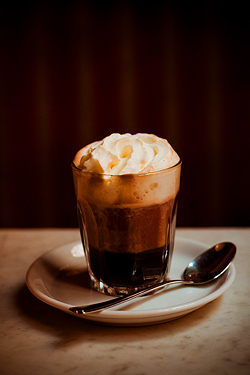
Einspänner

Café Schwarzenberg, Vienna, Austria
Hungry yet? Let’s road trip on this eating tour to Austria, shall we?
Vienna
Austria’s capital city, located in the northeast corner of the country, is well-known for its cuisine – and sweet tooth! Viennese cuisine is called Wiener Küche. It’s a historic mix of traditions, based on the Hapsburg empire cuisine, and includes a great deal of bread (thank you). But let’s dig right into the sweets, shall we? In Vienna, sweets aren’t only for dessert – they are also part of DINNER! Yes – fruits, sweets, sweet sauces (including vanilla and chocolate) all serve as part of the ingredients for main courses. There are also many famous meat dishes, including weiner schnitzel (breaded pork/veal) that is the most well-known dish from Vienna.

A Wiener Schnitzel made of veal, served with parsley potatoes, cranberries and a slice of lemon, along with a glass of Zipfer beer.
Cakes, tarts, and rolls, oh my! You have heard of Sacher torte (and its famous sister tarts, Malakoff, Linzer, Esterhazy, and Dobos). But there are also cakes, rolls (roulade), patries, and strudels (don’t even get me started on strudels, oh MY)! Don’t miss the cookies, either – especially at Christmas time (when, perhaps, you are in town for a Christmas market?). Lebkuchen (gingerbread) is just one of the many holiday offerings. Don’t miss Viennese hot chocolate, which is very thick and rich. Yes, please.
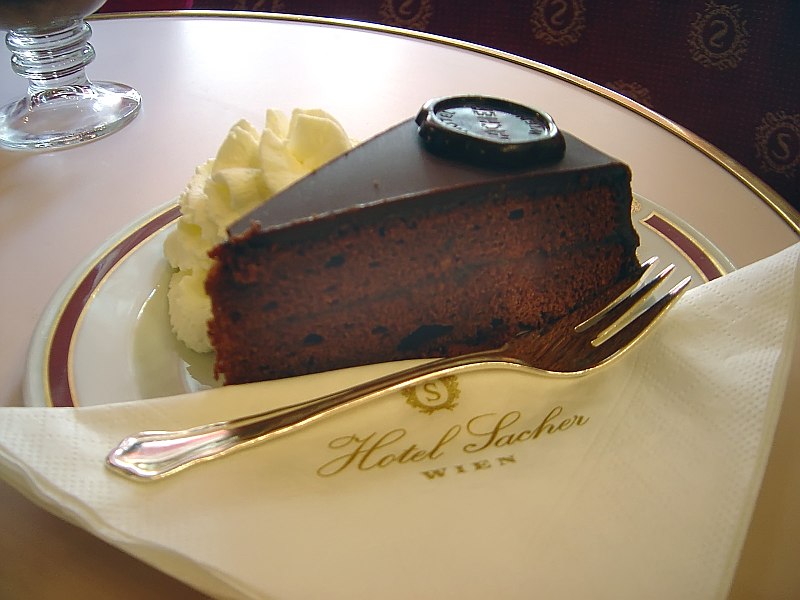
Sachertorte from the Hotel Sacher, Vienna.
Salzburg

Let’s focus on cheese for a minute, shall we? While great cheese is ubiquitous in Austria, cheese is really important in Salzburg.
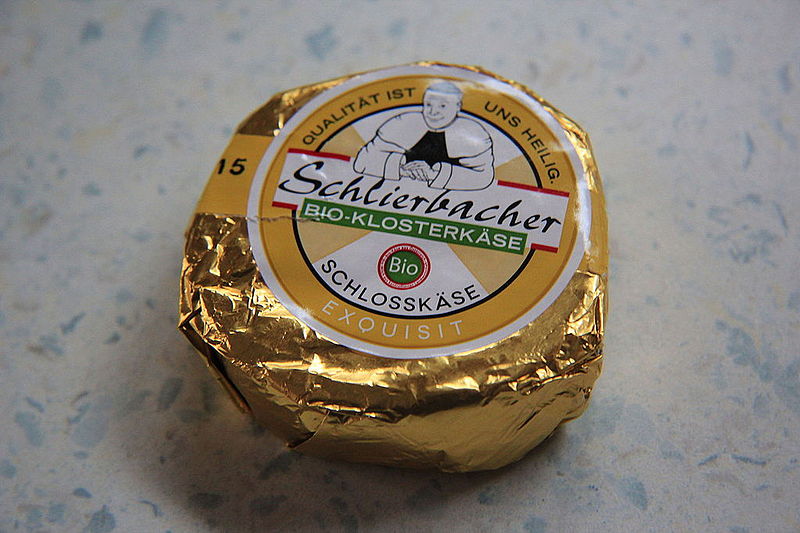
Schlierbacher Schlosskäse
Try Kasnocken (cheese dumplings), or take a hike (map here) and discover local cheese huts with unique cheeses (it’s all about terroir). Local fish is also important here – try the trout, it’s delicious! Salzburg is also known for its beer.
Kasnocken
Be sure to head to the Café Konditorei Furst, which created the Mozartkugel – a lovely chocolate treat filled with pistachio marzipan and nougat.

For dessert, try a piece of Salzburger Nocken, a local meringue-type pastry whose shape reflects the local geography.

Graz
Graz is in the southeast of Austria, and is called Austria’s Genuss Haupstadt - culinary capital (it’s also the country’s second-largest city). Here, you can find plenty of local wines, but also take time to dine on regional delicacies, such as pumpkin seed oil (drizzled on salads), Styrian fried chicken, sauerkraut, sausages, Styrian Vulcano ham. Hit the farmer’s market behind the Opera House – it’s open 6 days a week. There are plenty of tortes to be had, but head to the Palais Hotel Erzherzog Johann, for the Erzherzog-Johann Torte – white chocolate, marzipan, chocolate cake, green pumpkin seeds. Swoon.


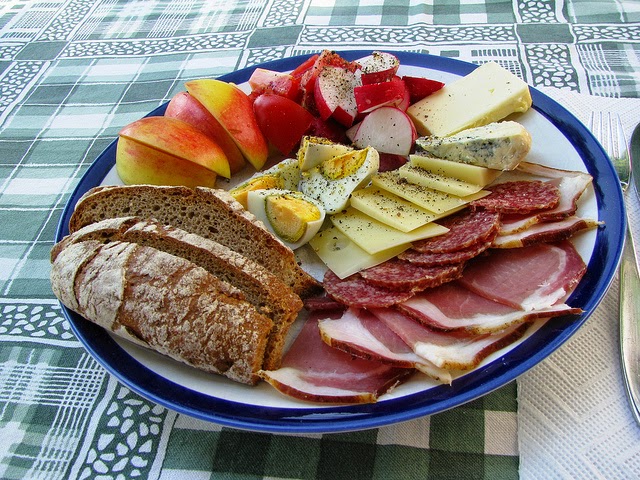
Tyrol region

Wattens Tirol Österreich
You’ll head to Innsbruck, of course, for the Alps – and also the food. One lovely part about this region is that much of the restaurant food is locally sourced. Famous Tirolean dishes include Schlutzkrapfen, pasta with potato filling; Kiachl, donuts, served either savory with sauerkraut or sweet with fruit or sugar); Tiroler Knoedl, speck dumplings served with sauerkraut and salad; Kaiserschmarrn, a shredded pancake and favorite of Kaiser Franze Joseph I; and Käsespätzle (soft egg noodles, mixed with cheese!) – in case you can’t wait, here’s a recipe. And let’s not forget the bacon (not that we would) - it's famous here.
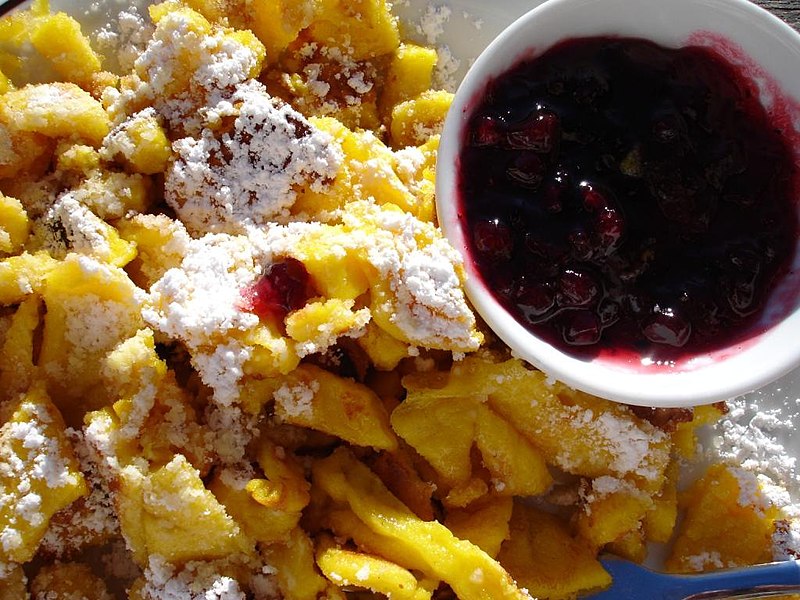
Kaiserschmarrn
Where will you go eat first?
View from Blassenstein mountain near Scheibbs (Lower Austria) to the west, with fog over Erlauf valley and Danube.
Photos cc: Ralf Roletschek, Zyance, Xocolatl, V. Kostitsin-Teterin, Andreas Poeschek, JIP, David Monniaux, Taxiarchos228, Karl Gruber, S82, Gert Vincent, Tourismus Salzburg, travel and transitions (x3), Martin Hirtreiter, Rudolph Simon, Uoaei1

